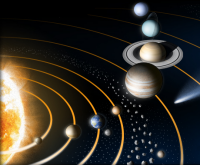 In this month's edition:
In this month's edition:
- Planetary Skylights: Jupiter, Mars & Saturn
- Meteor Showers: Ophiuchids & Lyrids
- June 2016 Sky Charts
- Log in to post comments
 In this month's edition:
In this month's edition:
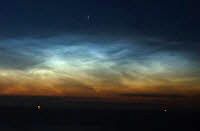 With bright twilight now persisting well into the night, observers of the sky should watch out for a particularly beautiful type of cloud formation seen only at this time of year.
With bright twilight now persisting well into the night, observers of the sky should watch out for a particularly beautiful type of cloud formation seen only at this time of year.
Known as Noctilucent cloud, these delicate formations appear above the northern horizon, long after sunset, often around midnight. Shining quite brightly, Noctilucent cloud is filamentary in structure, having a characteristic silvery-blue colour... [Read more about Noctilucent cloud]
 If you have not already done so, would members please find time to sign the online petition – re light pollution, set up by Wakefield Astronomical Society. This should have been sent via email to you already. Here's a link.
If you have not already done so, would members please find time to sign the online petition – re light pollution, set up by Wakefield Astronomical Society. This should have been sent via email to you already. Here's a link.
Ten thousand signatures are required for the Government to take note, and 100,000 for them to ‘really take note’. The closing deadline is July 22nd. If you know anyone else who would be inclined to sympathise with the cause, get them to sign it too. [Read more about Light Pollution Petition]
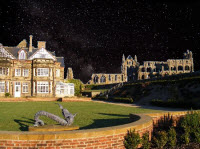 The Transit Party at Whitby Youth Hostel did allow Mark to schedule in some star party dates there. Both dates for May were clouded out, so the next date is June 10th (Friday) from 9pm – initially solar viewing, then lunar, and finally planetary observations.
The Transit Party at Whitby Youth Hostel did allow Mark to schedule in some star party dates there. Both dates for May were clouded out, so the next date is June 10th (Friday) from 9pm – initially solar viewing, then lunar, and finally planetary observations.
The following evening a star party is scheduled for the West Cliff as per usual. Weather permitting of course. [Read more about WDAS News: Whitby Youth Hostel Events]
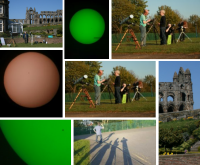 Well, would you believe it, a transit untroubled by the weather? Yes, it was true, you weren’t dreaming, for all 7 and a bit hours, Mercury remained visible against the Sun’s disk, as hardly a cloud dared show its face in the sky. Mark ventured up to the Whitby Youth Hostel with a couple of refractors, setting up in the rear garden in ‘most agreeable’ surroundings and a backdrop probably unmatched anywhere in the country, ie the Abbey. [Read more about Mercury Transits in Style]
Well, would you believe it, a transit untroubled by the weather? Yes, it was true, you weren’t dreaming, for all 7 and a bit hours, Mercury remained visible against the Sun’s disk, as hardly a cloud dared show its face in the sky. Mark ventured up to the Whitby Youth Hostel with a couple of refractors, setting up in the rear garden in ‘most agreeable’ surroundings and a backdrop probably unmatched anywhere in the country, ie the Abbey. [Read more about Mercury Transits in Style]
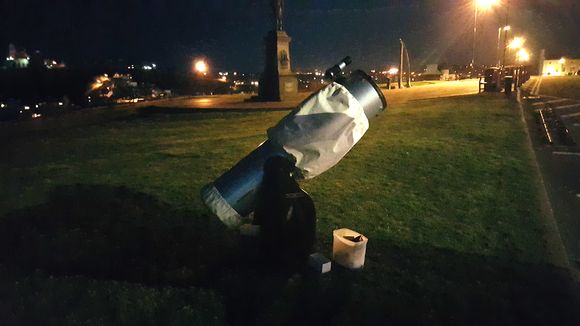
14-May-2016: A picture of the Eurovision Song Contest 2016, taken by Warren on West Cliff. (Actually there were definitely visitors: Warren was giving a sky tour when Andi made a brief visit during vote-counting.)
 The official start of summer in the northern hemisphere commences on June 21st – the date of the summer solstice this year, when the Sun reaches its greatest altitude on the ecliptic; the path it takes across the sky during a year. From our latitude this equates to almost 59 degrees above the southern horizon at midday.
The official start of summer in the northern hemisphere commences on June 21st – the date of the summer solstice this year, when the Sun reaches its greatest altitude on the ecliptic; the path it takes across the sky during a year. From our latitude this equates to almost 59 degrees above the southern horizon at midday.
The word ‘solstice’ is derived from the Greek for ‘Sun’ and ‘stoppage’. From our perspective the Sun stops moving north in the sky and starts to retreat southwards once again as the axial tilt of Earth begins to shift away from the direction of the Sun. [Read more about The Summer Solstice]
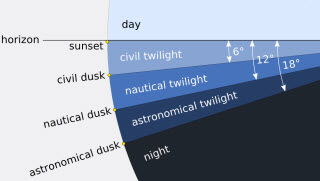 As we head toward summer, nights grow ever lighter with the deepest level of darkness; known as astronomical twilight, absent until early August. The duration of the three ’twilight zones’ continually change from mid northern latitudes, but is perhaps most noticeable around the solstices - particularly the summer solstice.
As we head toward summer, nights grow ever lighter with the deepest level of darkness; known as astronomical twilight, absent until early August. The duration of the three ’twilight zones’ continually change from mid northern latitudes, but is perhaps most noticeable around the solstices - particularly the summer solstice.
Using the evening as an example, following sunset civil twilight exists until the Sun drops six degrees below the horizon... [Read more about The Twilight Zones]